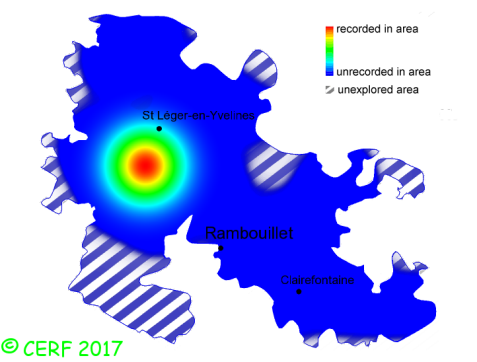|
Lepista luscina (Fr.:Fr.) Singer
|
common name(s) : Cloudy Tricholoma
New classification: Basidiomycota/Agaricomycotina/Agaricomycetes/Agaricomycetidae/Agaricales/Tricholomataceae
Former classification: Basidiomycota/Homobasidiomycetes/Agaricomycetideae/Tricholomatales/Tricholomataceae/Tricholomatoideae/Lepisteae
[sub-genus:Rhodopaxillus]
synonyms: Lepista panaeola, Clitocybe luscina, Tricholoma panaeolum, Tricholoma panaeolus, Lepista panaeolus, Rhodopaxillus panaeolus, Tricholoma luscinum, Rhodopaxillus nimbatus, Tricholoma nimbatus
(unconfirmed synonyms: Clitocybe nimbata, Lepista paneola)
edibility : edible
|
|
|
The cap is greyish to ochre, hazelnut, irregular.
The cap surface is smooth, not viscid nor sticky.
The stem is paler than the cap, without ring.
The flesh is ash grey, unchanging; its taste is mealy; the odour is mealy;
its texture is fibrous.
The gills are white to pink grey, crowded .
The spore print is pale pink. This species is saprophytic.
It grows on the ground, in meadows, parks, lawns or grassland.
The fruiting period takes place from July to December.
| Dimensions: | width of cap approximately 8 cm (between 3 and 15 cm) |
| | height of stem approximately 5 cm (between 3 and 7.5 cm) |
| | thickness of stem (at largest section) approximately 14 mm (between 4 and 25 mm) |
Chemical tests : none.
Distinctive features : pallid grey to buff-grey cap, often with darker blotches arranged in concentric circles; mealy odour; dull pink gills when mature, easily separated from cap; in meadows
Lepista luscina is rare and confined in the forest of Rambouillet, and is infrequent, more generally speaking
.
|  | | Above : distribution map of Lepista luscina in the forest of Rambouillet |
|
page updated on 14/01/18
